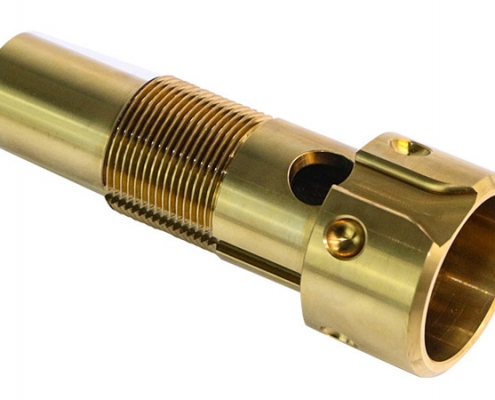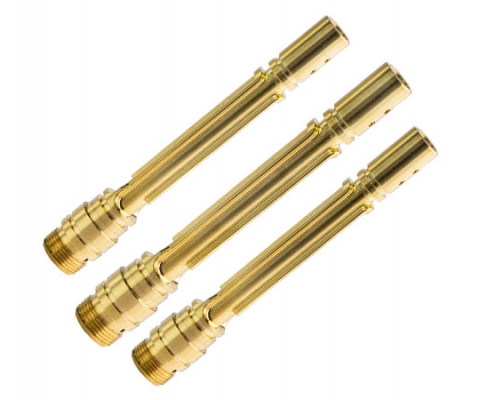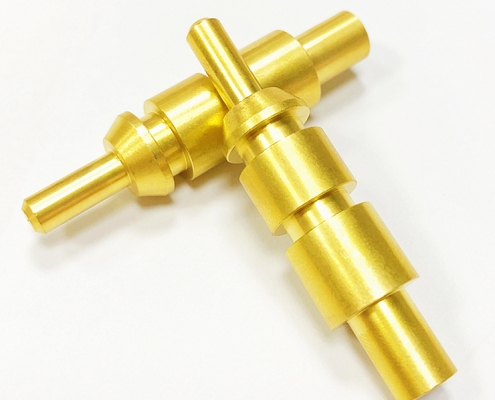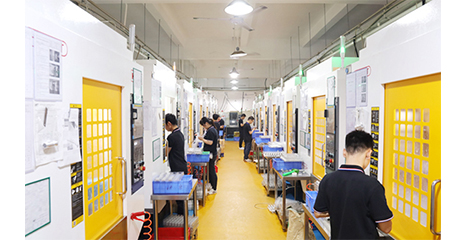Brass Melting Point: A Comprehensive Guide
Confused about the melting point of brass and its industrial relevance? Misunderstanding this key property can disrupt processes or affect product quality. Discover precise melting points, factors, and comparisons in this comprehensive guide.
Brass melts between 900°C and 940°C, influenced by zinc content and composition. Knowing this ensures precision in manufacturing, casting, and alloy selection.
Explore key factors, comparisons with other metals, and practical tips for melting brass.
What is Brass?
Brass is an alloy made primarily of copper and zinc, known for its durability, corrosion resistance, and excellent machinability. The proportion of copper and zinc varies depending on the type of brass, influencing its physical and thermal properties. It is widely used in industries such as automotive, electronics, and decorative arts. For CNC machining, brass offers a balance of hardness and ease of fabrication, making it ideal for precision components.

What is the Melting Point of Brass?
The melting temperature of brass is usually between 900°C and 940°C. This range is determined by the mix of copper and zinc in the alloy. Brasses with higher zinc content melt at lower temperatures, while those with more copper need higher heat to melt.
Knowing this helps ensure the brass can be safely and effectively melted or shaped, which is especially important in processes like casting and machining.
How does Brass Melting Temperature compare to Other Metals?
Brass’s melting point is lower than copper but higher than zinc, making it an excellent choice for versatile industrial applications. Its slightly lower melting temperature compared to bronze is due to its higher zinc content, which also contributes to its machinability and corrosion resistance. Below is a more detailed comparison of brass melting point, density, and conductivity, as well as its common uses.
| Metal | Melting Point (°C) | Density (g/cm³) | Electrical Conductivity (% IACS) | Thermal Conductivity (W/m·K) | Common Uses |
|---|---|---|---|---|---|
| Copper | 1085 | 8.96 | 100% | 401 | Electrical components, plumbing |
| Brass | 900–940 | 8.40–8.73 | 28–37% | 109–120 | Automotive parts, decorative items |
| Bronze | 850–950 | 8.80 | 15–20% | 60 | Bearings, marine applications |
| Zinc | 419 | 7.14 | 29% | 113 | Galvanization, die-casting |
| Aluminum | 660 | 2.70 | 61% | 237 | Lightweight structures, packaging |
Factors Affecting the Melting Point of Brass
The melting point of brass is not fixed; it varies based on several factors. Understanding these factors can help ensure the brass performs as expected in industrial or custom applications. The following are factors that affect the melting temperature of brass:
1. Alloy Composition
The mix of copper and zinc in brass is the primary factor affecting its melting temperature. A higher copper content increases the melting point, while more zinc lowers it. Additionally, trace elements like aluminum, tin, or lead added for specific properties can slightly adjust the melting point of brass metal.
2. Impurities
Brass is often made from recycled materials, which may contain impurities such as iron, nickel, or lead. These impurities can significantly alter the melt temp of brass, sometimes making it less predictable. Careful sorting and refining of materials help maintain consistent properties.
3. Processing Methods
The way brass is processed can also impact its melting temp. For example, pre-treated or annealed brass may exhibit slight differences in its melting temperature due to changes in its microstructure. Recycled brass, depending on its purity, may require adjustments in melting techniques to achieve the desired results.
Why is Brass’s Melting Point Important?
Knowing the brass melt temperature is essential for ensuring quality and precision in manufacturing processes like casting and CNC machining. If the temperature isn’t controlled properly, parts may become brittle or lose their shape. This is especially crucial in industries like electronics, where even the smallest errors can cause parts to malfunction.

How to Measure Brass’s Melting Point
To find the melting point brass, industries use tools like thermocouples or high-temperature furnaces. These devices measure the heat level when brass turns from solid to liquid. A method called differential scanning calorimetry provides even more precise results, which helps ensure that the melting temp for brass is accurate and reliable for critical applications.
How to Melt Brass?
Melting brass requires controlled conditions to maintain the alloy’s properties. Crucibles and induction furnaces are commonly used. The process includes heating the material to its brass metal melting point, skimming off impurities, and pouring the molten brass into molds.
How Melting and Boiling Point of Brass Compare?
The melting temperature of brass ranges between 900°C and 940°C, depending on its composition. This is the point at which the solid brass turns into a liquid. In contrast, the boiling point of brass is significantly higher, typically around 2000°C, where the alloy transitions into a gaseous state. The gap between these points makes brass ideal for applications requiring high-temperature resistance, as it remains stable in most industrial processes without reaching its boiling point.

Melting Point and Industrial Usage
Industries like automotive and electronics rely on brass because its melting point for brass makes it easy to work with during manufacturing. Brass is ideal for creating components such as connectors, gears, and decorative parts. CNC machining ensures precise shaping and tight tolerances, which are critical for these applications.
Copper vs. Brass Melting Temperature
The melting temp brass is lower than pure copper due to the addition of zinc, making it easier to melt and work with in industrial processes. This difference is important where properties like malleability and heat resistance are considered. Copper’s higher melting point of 1085°C makes it more heat-resistant but less malleable than brass. Here’s a comparison:
| Property | Copper | Brass |
|---|---|---|
| Melting Temp (°C) | 1085 | 900–940 |
| Conductivity | High | Moderate |
| Malleability | Moderate | High |
Brass vs. Bronze: Melting Points Compared
Brass and bronze are similar alloys, but their melting properties differ slightly. The melting point bronze is close to brass, at about 850–950°C, but bronze is generally less ductile. Brass’s melting temp brass makes it better for machining and casting applications, especially when high precision and smooth finishes are required, as in plumbing or musical instruments.
More Resources: What is the Difference Between Brass and Bronze?
Brass vs Aluminum: CNC Machining Materials Comparison Guide
In Conclusion
Understanding the melting temperature of brass is essential for manufacturers working across various industries. With a melting range of 900°C–940°C, brass offers an ideal balance of strength, malleability, and heat resistance. This makes it highly versatile for applications in electronics, automotive, and decorative components.
Start your CNC machining metal project with VMT, a trusted manufacturer with over 15 years of experience. We offer precision custom parts, fast delivery, strict quality control, and full material support to meet your production needs.

Frequently Asked Questions
Why Should Polishing Be Done From Coarse To Fine?
The process of polishing from coarse to fine is based on the scientific principles of material surface treatment. First of all, coarse polishing can quickly remove large impurities and significant uneven areas on the material surface, laying a good foundation for subsequent fine polishing. As the polishing grain size is gradually refined, the surface roughness is continuously reduced until the desired mirror or high-gloss effect is achieved. This process not only improves the aesthetics of the product but also enhances its durability and functionality.
What Process Does Polishing Belong To?
Polishing is a type of surface treatment process and is widely used in CNC machining, milling, turning and other mechanical processing fields. It uses mechanical, chemical or electrochemical effects to modify the surface of the workpiece through polishing tools, abrasive grains or other polishing media to reduce surface roughness and make it smooth and bright. Polishing technology is used in the processing of various materials such as metal, wood, glass and plastic, and is an important means to improve product quality and added value.
Theifference Between Brushing And Polishing.
In CNC machining services, drawing and polishing are two common surface treatment processes. They each have their own characteristics and are suitable for different processing needs.
- Wire drawing process: Wire drawing is a metal processing process that uses external force to force the metal through a mold, thereby forming specific textures or lines on the metal surface. This process can give the metal surface a unique visual effect and feel, while increasing the wear resistance of the surface. The brushing process is not afraid of minor scratches, because the scratches tend to blend with the original texture and do not affect the overall beauty.
- Polishing process: In contrast, the polishing process pays more attention to the smoothness and gloss of the surface. It achieves a mirror or high-gloss effect on the surface of the workpiece by gradually refining the polishing grain size and increasing the polishing time. The polished surface has high flatness and strong reflective ability, which can significantly improve the aesthetics and texture of the product. However, polished surfaces are relatively fragile and susceptible to scratches and damage.



